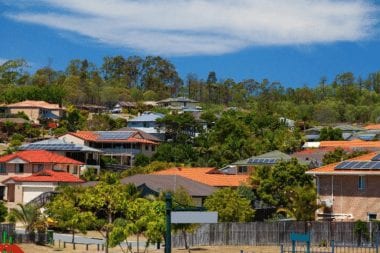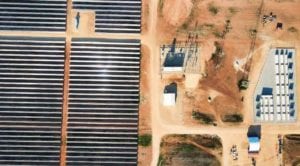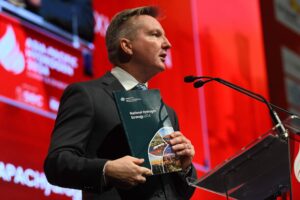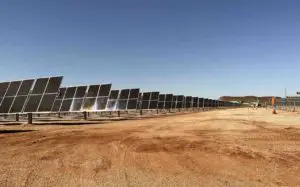An electricity grid with 18 times more electric vehicles than today, another doubling of rooftop solar penetration, and parts of the network where peak demand occurs in winter as more and more households get rid of gas…
This is what the next five-year plan looks like for Victoria’s largest electricity distribution company, Powercor, which this week unveiled its draft investment plans for the 2026-2031 period.
Powercor, which runs the poles and wires network throughout western Victoria and the western suburbs of Melbourne, says managing the impacts of climate change and the increase in electrification are leading to some of its biggest operational changes, yet, as it plans for the years ahead.
The changes include making significant investment to allow more home and network EV charging, accommodate more and bigger rooftop solar systems, and smart tools to meet significant growth in energy demand from electrification and a fast growing population.
On electrification, Powercor says its analysis indicates the consumer shift away from major gas appliances – bolstered by state government policy – will result in an additional 3,000GWh of electricity being consumed a year by Victorians, mostly for space and water heating.
As a result of this increased electrification, Powercor says parts of its network are expected to become “winter peaking” by 2031. The shape of daily demand has changed a lot, too, with the uptake of rooftop solar, although as the chart below shows the shape of demand varies between the summer and winter.
Of the $3.3 billion the network company is proposing to spend over the five-year regulatory period – a spend it says will add around $2 a year to the average household power bill – $295 million will be invested in enabling growth, electrification and consumer energy resources. Another $61 million will be invested to strengthen the network against extreme weather.
The rest of the spend is much more familiar: $1.2 billion on asset maintenance and ensuring reliable supply; $450 million on connecting new customers, and; $233 million to use “technology” to further reduce risks from vegetation clearance, are the big ticket items.
But it is what the network is spending – and what it is doing – to keep pace with the rapidly changing distributed renewables-based and electrified grid that is most interesting.
On rooftop solar, there are some promising moves. First, Powercor will not be following their NSW counterparts’ example by introducing solar export charges, or what is sometimes called a sun tax, for rooftop Pv sent to the grid in the middle of the day.
“The Victorian government is strongly opposed to mandatory export charges and therefore we have not considered export pricing for the default ToU tariff,” the Draft Proposal Tariff Directions Paper says.
Rather, Powercor is proposing to introduce a new low-priced saver period from 11am‒4pm throughout the year in the network ToU tariff that will
encourage households to shift consumption from the peak to saver period – thus using up some of the excess solar and providing households without solar the opportunity to enjoy its benefits.
Next, the network says it will be focusing some of its funds – just $2 million – to implement flexible rooftop solar export products that will vary customers’ export limit through the day based on the available network capacity over time.
This means no export caps, which usually limit exports to 5kW, and more ability for households to pitch in and support the grid when needed.
“We are proposing a minor export augmentation program to upgrade network assets to facilitate more export,” the report says.
“This will make better use of our existing infrastructure to enable an additional 702TWh of export for customers over 2026‒31, equivalent to the total annual generation of 117,000 5kW solar systems, with even more future benefits,” draft paper says.
For all those future electric vehicles, money will also be invested in “flexible load products” that Powercor says are expected to create future levers to facilitate more EV fast charging and shift charging away from peak periods.
“EV adoption will be a key driver of load growth on our network for many years to come, and as customer experience and confidence with EVs grows, flexible load products are likely to play a role in ensuring efficient investments,” the draft paper says.
Powercor says research conducted with Monash University indicates that more than 50 per cent of customers would be open to automating some of their EV charging as long as they have the ability to override automated signals.
“We are proposing to develop and refine the capability to implement flexible load products during the 2026‒31 regulatory period, in preparation for scale implementation of flexible load products during our 2031‒36 regulatory period,” the network says.
“Developing this capability in 2026‒31 will require us to build systems, ensure interoperability, iteratively learn from trials, and refine our understanding of how customers adopt and respond to flexible load products.
“Our approach recognises the mixed support from our customers and stakeholders and allows time for further engagement on design and implementation to ensure that customers are comfortable with flexible load products and they are not seen as a barrier to the energy transition.”
Powercor says the combination of new pricing structures together with smarter technology, such as flexible exports, are ultimately designed help customers make the most of their solar.
“We’re also planning to shorten the peak period from 3‒9pm to 4‒9pm in the residential time-of-use tariff, to adapt to the growing rooftop solar generation, which is pushing the residential peak period later in the day,” a spokesperson from the network told Renew Economy.
“Our time of use tariff will not be mandatory. And we are not introducing any solar export charges.”











Leave a Reply